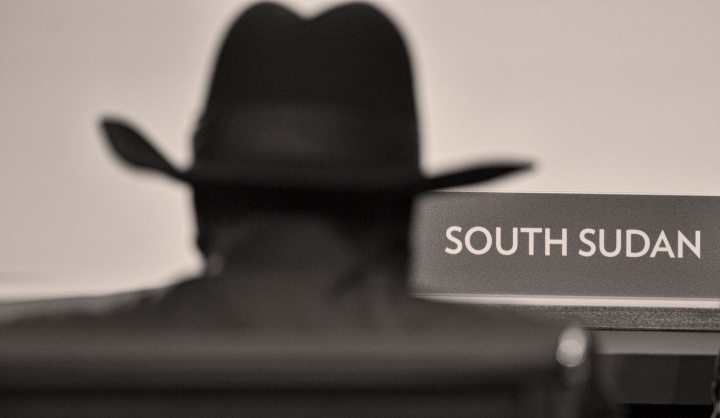Africa
South Sudan stares down the barrel of another civil war

Independence Day in South Sudan was marked by battles between rival factions as the civil war – which officially ended in April – raised its brutal, bloody head again. Can South Sudan avoid another devastating conflict? The country’s short history is not on its side. By SIMON ALLISON.
Ahead of South Sudan’s Independence Day, its fifth, the government announced that it would not be spending any money on celebrations. “We decided not to celebrate the July 9 Independence Day, because we don’t want to spend that much. We need to spend the little that we have on other issues,” said a minister.
But even though there was nothing to celebrate, South Sudan got its fireworks.
Juba’s eruption into violence this weekend was as predictable as it was tragic. By Sunday evening, there were at least 272 people killed in pitched battles between government soldiers and former rebels, according to Reuters, citing a health ministry source. At least 32 civilians were among the dead. These figures are likely to rise.
The immediate cause of the fighting is still unclear. No one is quite sure who fired the first shot, or why. Was it a clumsy effort to neuter Vice-President Riek Machar’s former rebels? Was it an attempted coup against President Salva Kiir, either from the former rebels or from his own not-so-loyal loyalists? Or was it simply an altercation between bored soldiers that got out of hand?
We’ve seen this movie before. In December 2013, to be precise. Then, fighting within the presidential guard – between Kiir’s Dinka soldiers and Machar’s Nuer – turned into several days of ethnic killings in the capital, and sparked a civil war that raged until April this year.
The war’s conclusion was hardly a solution, however, restoring as it did the very same toxic political environment that failed so badly the first time round, complete with Kiir and Machar in the very same seats. As the Daily Maverick observed at the time:
“Two-and-a-half years of fighting, tens of thousands of bodies, untold hardship later, and for what? To resume the status quo of December 2013? If anything underscores the sheer, bloody-minded pointlessness of this civil war, it is its resolution, which merely restores South Sudan to where it was before the war began – except this time with added debt and emotional scarring, and without global goodwill or a decent oil price. That’s in the best case scenario. A worse case, in which the parties resume fighting either in the capital or anywhere along the still-contested frontline, cannot be ruled out. In such a tense environment, it takes just one cocky soldier, or one stray bullet, for the peace deal to go up in flames.”
The peace deal, which satisfied no one, is well and truly burning. And even with the best will in the world – not something that can be presumed of either – it’s unclear whether Kiir and Machar can put out the flames. On Friday, their joint press conference at the Presidential Palace was hastily abandoned after the Presidential Palace itself came under attack, suggesting that neither leader is really in control.
Or maybe, given South Sudan’s enormous challenges and bloody history, no one really can be in control. Writing in these pages, Lauren Hutton, an old Juba hand, described South Sudan’s existential crisis best:
“It starts with an inconvenient geography that belies centralised control and includes an uncomfortable history, some meddling neighbours, hardened identities and close social ties that manifest as networks of obligation. It is a context in which warriors survive and maliciously intentioned, ambitious people grin with slimy pride. Suddenly, with independence thrust upon the country just six months after the referendum and without the full implementation of the peace agreement, there was so much more to fight for, so much more at stake than ever before. Money. Control. Power. They are called ‘cycles of violence’ because violence feeds off itself. Violence begets violence and there had been decades of violence that still required revenge, avenge and resolve. Greed, fear, mistrust, anger and hatred make excellent comrades-in-arms.”
Even as South Sudan stares down the barrel of another civil war, we know it’s really the same one, which is increasingly indistinguishable from the liberation struggle which preceded it. South Sudan was born from conflict into conflict; war is its default state, and also the raison d’etre of the state. Even if this outbreak of violence is somehow, miraculously contained, there’s nothing to suggest that any of South Sudan’s leaders are capable – or willing – to break the cycles of violence. DM
Photo: President of South Sudan, Salva Kiir Mayardit, attends the leaders session entitled ‘Investing in Africa’s Future’, at the US Africa Leaders Summit at the State Department in Washington DC, USA, 06 August 2014. EPA/MICHAEL REYNOLDS

















 Become an Insider
Become an Insider